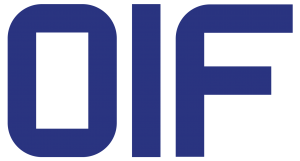The OIF Launches New Integrated Photonics Projects
Two Implementation Agreements Published for Industry Use
Fremont, Calif. – May 7, 2015– In the wake of the Optical Internetworking Forum’s April quarterly meeting in Lisbon, Portugal, the organization announced that initial work has begun on technical specifications for high bandwidth optical modulators and receivers for coherent applications. Members also approved implementation agreements for 100G applications. The Q2 meeting also saw several OIF technical committees meet to continue the Forum’s work on the FlexEthernet and Common Electrical Interface (CEI) projects begun in 2014. Finally, based on the success of technical demonstrations in 2014, Forum members held initial discussions regarding an SDN-focused demo for 2016.
“Our members are working at full capacity right now,” said Karl Gass, of Qorvo and the OIF Physical and Link Layer Working Group vice chair, Optical. “With as many as 19 documents going to ballot this quarter alone we are completing technical work at an extremely fast pace. These two new electro-optical component projects will fill a gap in the line side component space, providing systems engineers more tools to increase channel capacity beyond 100Gb/s.”
The utilized coherent ASIC Baud Rate is no longer sufficient information to define the frequency response requirements for coherent electro-optical (EO) components now that the industry has embraced the use of preconditioning. The High Bandwidth Polarization Multiplexed Quadrature Optical Modulator project enables coherent electro-optical modulation of a wider optical spectrum per optical carrier defined in terms of frequency response. The Intradyne Coherent Receiver project proposes an improved RF high frequency response that enables coherent electro-optic demodulation of a wider optical spectrum per optical carrier.
Implementation Agreements Approved for Public
The IA for Integrated Dual Polarization Micro-Intradyne Coherent Receivers targets coherent 100G PM-QPSK applications with nominal symbol rates up to 32 GBaud in a CFP2 form factor. This IA also defines a low speed electrical interface incorporating an SPI bus for control of the TIAs in the coherent receiver.
The IA for Generation 2.0 100G Long-Haul DWDM Transmission Module-Electromechanical applies to optical line interface applications. The IA reduces the size and power consumption requirements by defining a 4×5 module that can be used for 100G long-haul DWDM transmission applications.
For more information go to http://www.oiforum.com/documents/implementation-agreements/
About the OIF
The OIF facilitates the development and deployment of interoperable networking solutions and services. Members collaborate to drive Implementation Agreements (IAs) and interoperability demonstrations to accelerate and maximize market adoption of advanced internetworking technologies. OIF work applies to optical and electrical interconnects, optical component and network processing technologies, and to network control and operations including software defined networks and network function virtualization. The OIF actively supports and extends the work of national and international standards bodies. Launched in 1998, the OIF is the only industry group uniting representatives from across the spectrum of networking, including many of the world’s leading service providers, system vendors, component manufacturers, software and testing vendors. Information on the OIF can be found at http://www.oiforum.com.

